The world of construction and infrastructure is constantly evolving, driven by the pursuit of materials that can offer a perfect balance between strength, durability, and lightweight properties. Glass Reinforced Plastic (GRP) has emerged as a game-changer in this domain, revolutionising the way we conceive and construct structures.
GRP offers a myriad of benefits that make it an ideal choice for modern infrastructure projects:
Strength and Durability
One of the most notable advantages of GRP is its exceptional strength-to-weight ratio. Despite being lightweight, GRP boasts impressive strength properties, making it capable of withstanding heavy loads and harsh environmental conditions. This inherent durability ensures that structures built with GRP can withstand the test of time, reducing the need for frequent maintenance and repairs.
Corrosion Resistance
Unlike traditional construction materials such as steel or wood, GRP is highly resistant to corrosion. This makes it particularly well-suited for infrastructure projects in coastal areas or industrial settings where exposure to moisture, salt, and chemicals is common. By using GRP components, engineers can mitigate the risk of corrosion-related damage, extending the lifespan of infrastructure assets.
Versatility in Design
GRP offers unparalleled flexibility in design, allowing engineers and architects to realize their creative visions without compromising on structural integrity. Whether it’s intricate shapes, curved surfaces, or custom configurations, GRP can be moulded to meet the unique requirements of each project. This versatility opens up new possibilities for innovative and visually striking infrastructure designs.
Lightweight Construction
The lightweight nature of GRP not only simplifies transportation and installation but also reduces the overall load on supporting structures. This can lead to significant cost savings in terms of materials and construction time, making GRP an economically viable choice for large-scale infrastructure projects. Additionally, the reduced weight can lessen the environmental impact associated with transportation and construction activities.
Applications in Infrastructure:
GRP finds application in a wide range of infrastructure projects, including:
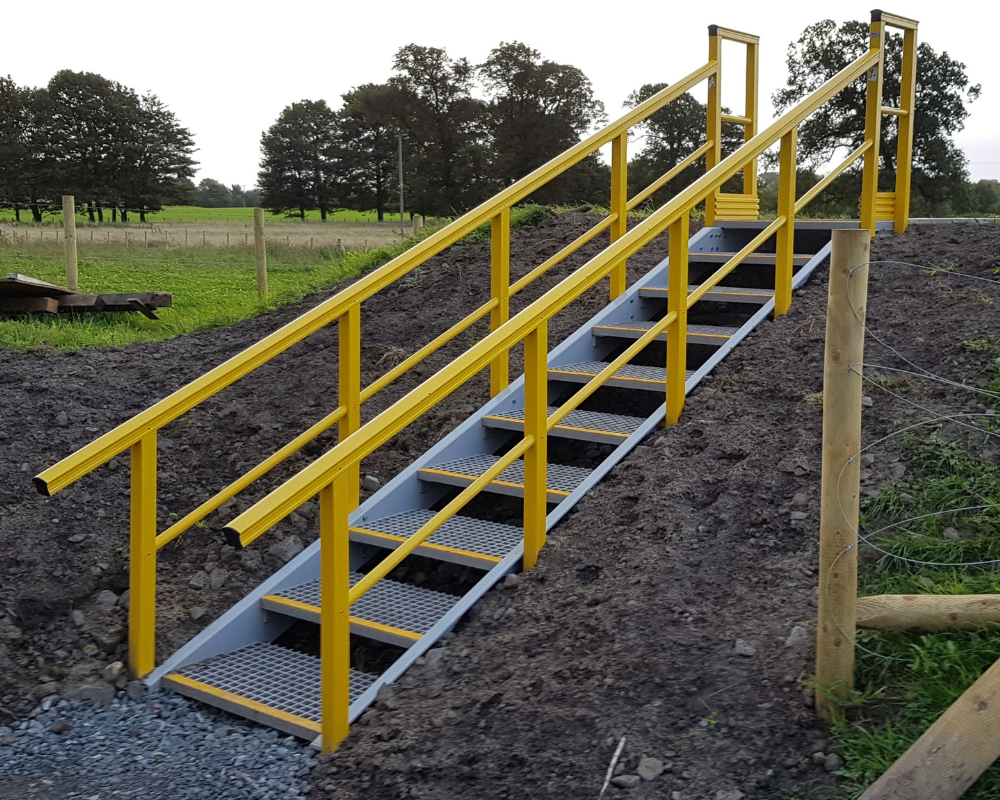
Access Stairs: Using GRP in the construction of access stairs for public infrastructure brings forth a range of notable benefits. With an extreme strength-to-weight ratio, the low weight facilitates easier installation and reduces the structural load on the surrounding elements. GRP’s inherent resistance to corrosion and weathering ensures the longevity of access stairs, even in challenging outdoor environments, thus minimising maintenance costs over time. The material’s non-conductive properties enhance safety by reducing the risk of electrical conductivity, making GRP an ideal choice for staircases in various settings, including industrial, commercial, and public spaces. Find out more…
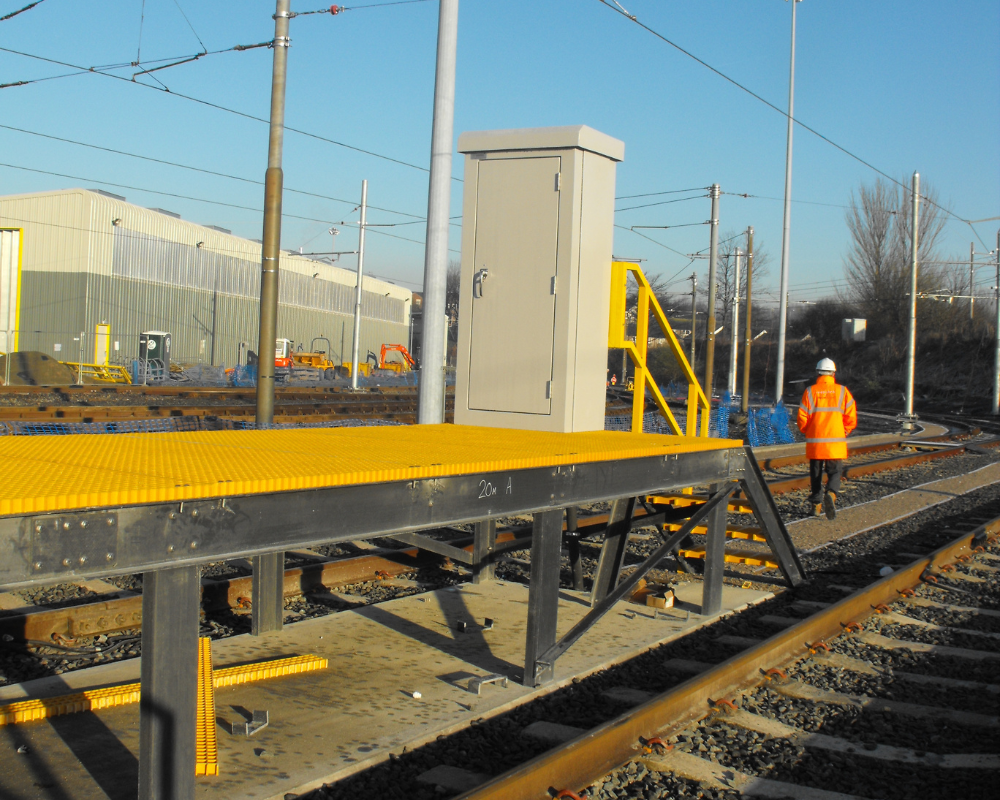
Railway Platforms: GRP’s innate resistance to corrosion and weathering ensures that railway platforms remain robust and resilient even in challenging environmental conditions, minimising maintenance requirements and associated costs. GRP’s exceptional durability enhances the longevity of the platforms, making them capable of withstanding heavy foot traffic and the dynamic loads associated with railway operations. Additionally, GRP’s non-conductive properties contribute to safety, reducing the risk of electrical hazards in railway settings. Find out more…
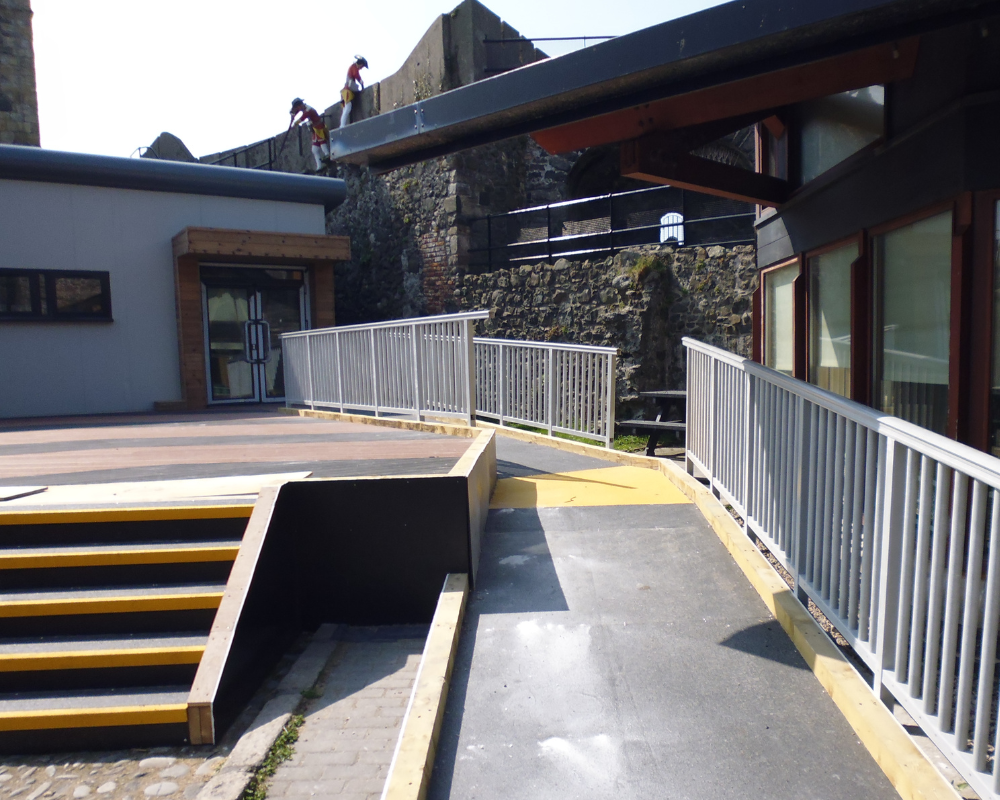
Anti Slip Flooring: GRP Floor sheets are commonly used in areas of heavy footfall, such as in public transport networks, factories, schools, and parks. Our GRP floor sheets provide a robust, cost-effective, long-term answer to improving safety in potentially hazardous areas. The material’s inherent resistance to corrosion, chemicals, and extreme weather conditions makes it a durable alternative to traditional materials. Its lightweight nature facilitates easy installation and maintenance, making it a preferred solution for industrial and commercial spaces. Find out more…
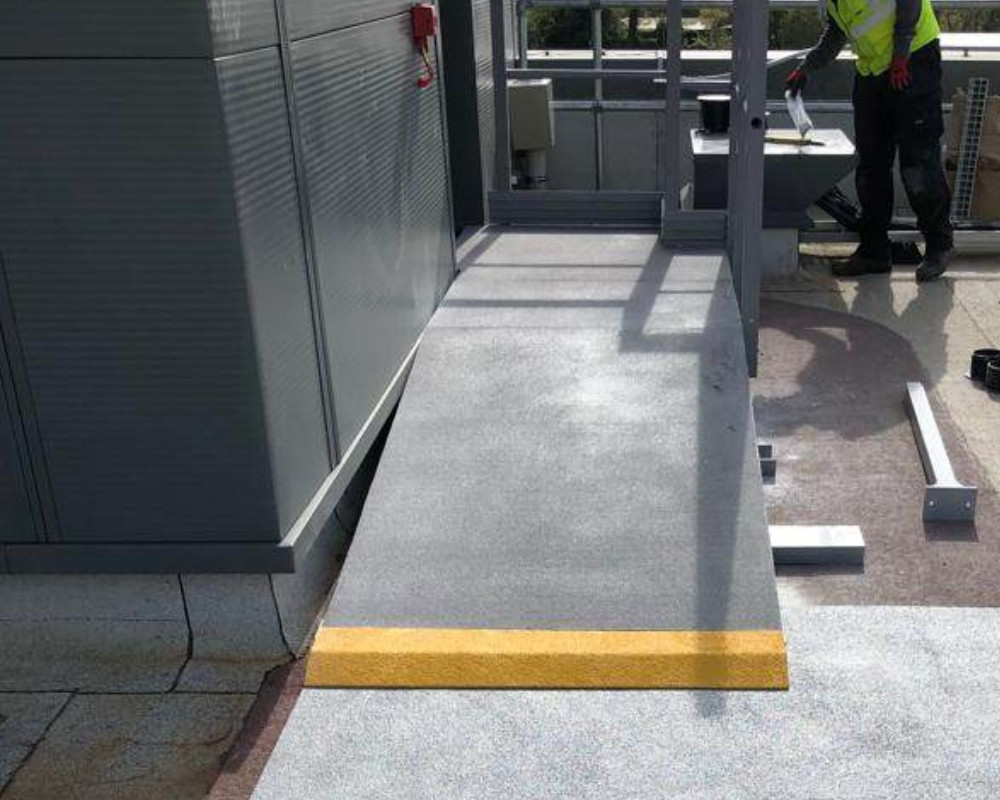
Access Ramps: The material’s anti-slip surface enhances safety, especially in wet or slippery conditions, providing a secure pathway for pedestrians and individuals with mobility challenges. Overall, the use of GRP in access ramps not only promotes safety and accessibility but also contributes to the sustainability and longevity of public infrastructure.
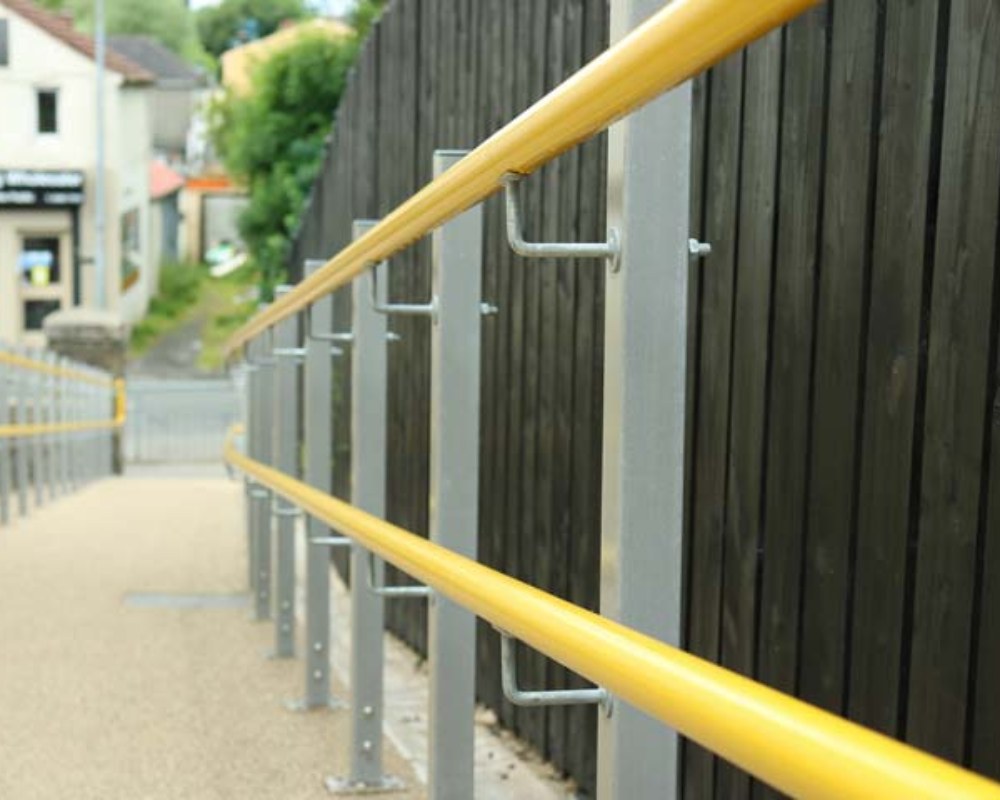
Handrails: GRP is an excellent choice for handrail construction. Its resistance to corrosion and weathering ensures that GRP handrails maintain their structural integrity even in harsh environmental conditions, reducing maintenance costs over time. The material’s non-conductive properties enhance safety by minimising the risk of electrical hazards, making GRP handrails suitable for various public settings. The versatility of GRP allows for the creation of customised handrail designs to meet specific architectural and safety requirements. Additionally, GRP handrails offer a comfortable, warm-to-touch grip even in cold and icy conditions, contributing to user safety. The overall result is a durable, cost-effective, and safe solution for handrails in public infrastructure, promoting accessibility and enhancing the longevity of these essential components. Find out more…
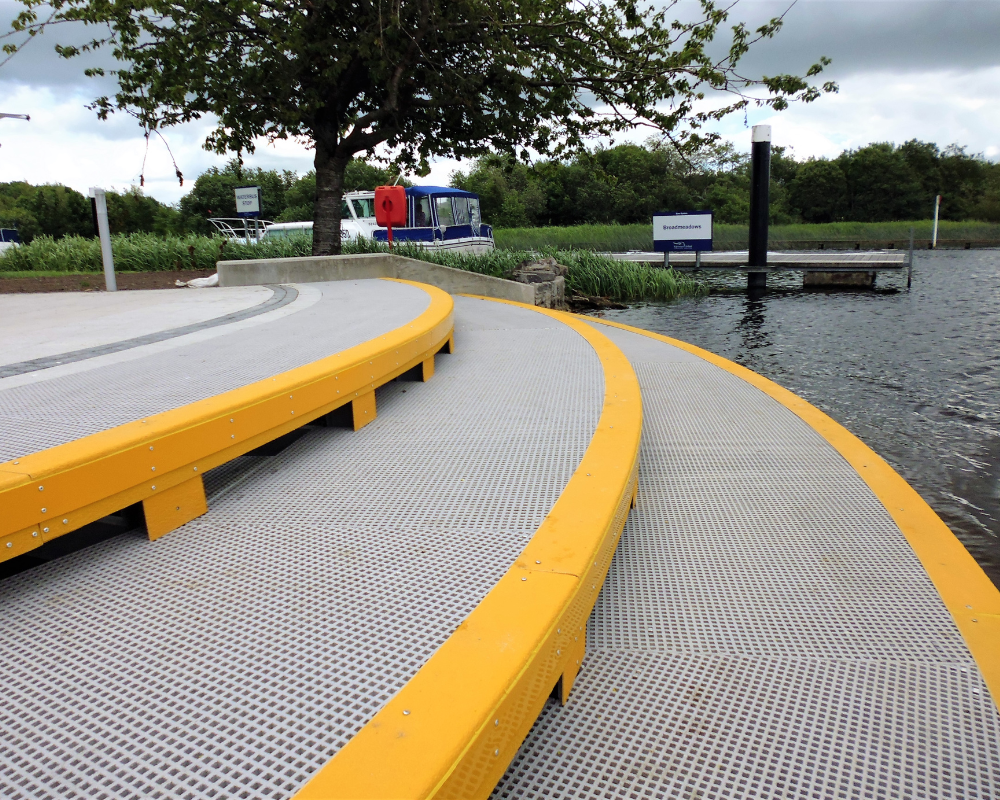
Marine Pontoons: The corrosion-resistant properties of GRP make it exceptionally well-suited for maritime environments, where exposure to saltwater and harsh weather conditions is prevalent. The material’s high strength-to-weight ratio ensures structural integrity while being lightweight, simplifying installation and reducing the overall load on the supporting elements. GRP’s durability and resistance to decay contribute to extended service life, minimising maintenance costs and enhancing the sustainability of marine infrastructure. Additionally, the moldability of GRP allows for the creation of customised pontoon designs to meet specific requirements, making it a versatile choice for diverse marine applications. Find out more…
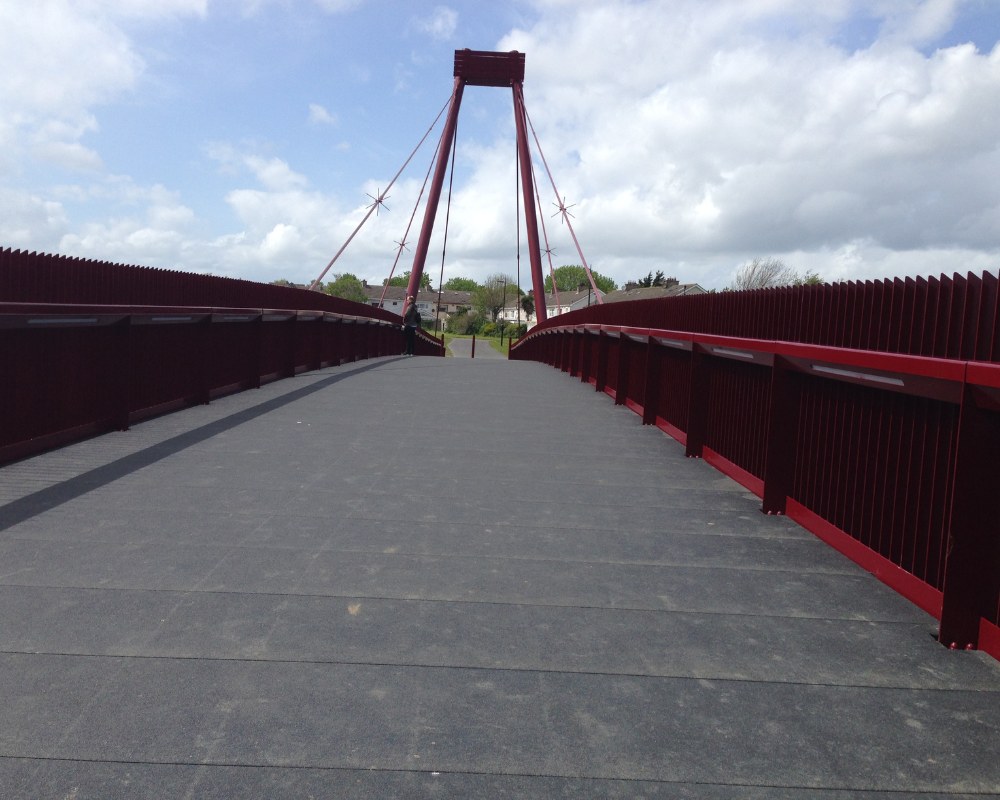
Pedestrian Bridges: The lightweight nature of GRP facilitates easy installation and reduces the load on the supporting structures, streamlining the construction process and minimising the impact on existing infrastructure. Its exceptional strength, coupled with resistance to corrosion and weathering, ensures the longevity of pedestrian bridges even in demanding outdoor conditions, leading to lower maintenance requirements and costs over time. The material’s versatility allows for the creation of aesthetically pleasing and architecturally tailored designs, accommodating specific requirements of pedestrian pathways. Additionally, GRP’s anti-slip characteristics contribute to user safety, particularly in adverse weather conditions.
Conclusion:
As the demand for infrastructure solutions that marry strength with lightweight characteristics continues to grow, GRP has emerged as a versatile and reliable material. Its many applications showcase its adaptability across diverse projects. Builders, architects, and engineers are now turning to GRP to not only meet but exceed the challenges posed by modern construction requirements.
In the realm of infrastructure, GRP is not just a material; it’s a paradigm shift, redefining the possibilities of what can be achieved in construction. As technology advances and innovation propels the industry forward, GRP stands as a beacon, offering solutions that are both strong and lightweight, setting a new standard for the future of infrastructure development.
Find out more about our Public Infrastructure GRP solutions here.




